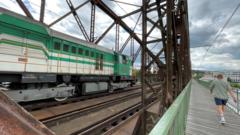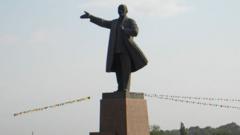Retracing the steps of influential Harlem Renaissance writer Nella Larsen, we delve into her formative years spent in Copenhagen, which played a critical role in shaping her literary voice. “Quicksand," published in 1928, is notably inspired by Larsen’s own experiences as a mixed-race individual navigating identity and belonging. It vividly illustrates how the scenes of mid-20th century Copenhagen formed the backdrop of her quest for self-discovery.
In "Quicksand," protagonist Helga Crane’s encounters in the streets of Copenhagen were marked by her striking “dark, alien appearance” — a reflection of how racial identity was viewed in the early 20th-century Danish society. Over 90 years later, the multicultural landscape of Copenhagen has transformed profoundly, accommodating a more diverse population while traditional elements of the city, including its picturesque canals and spirited cycling culture, remain.
Experts have long theorized that "Quicksand" acts as a semi-autobiographical exploration of Larsen's youth, with new genealogical research confirming ties between Larsen and her life in Denmark. With a mix of Danish and Caribbean heritage, Larsen's upbringing in a predominantly white household influenced her narrative style and thematic choices, particularly regarding race and identity.
Although many things have changed in Copenhagen, the heart of Larsen's work continues to resonate. The echoes of architecture that inspired her and the vibrant atmosphere of a city once filled with stares still paint the modern cultural landscape. The novel's reception upon publication, including praise from esteemed figures like W.E.B. Du Bois, establishes Larsen as a critical voice within the Harlem Renaissance — a legacy strengthened every time her own past is revisited. As we honor her contributions, the investigation into her life signals a broader conversation around the enduring relevance of race, identity, and place in an ever-evolving societal context.
In "Quicksand," protagonist Helga Crane’s encounters in the streets of Copenhagen were marked by her striking “dark, alien appearance” — a reflection of how racial identity was viewed in the early 20th-century Danish society. Over 90 years later, the multicultural landscape of Copenhagen has transformed profoundly, accommodating a more diverse population while traditional elements of the city, including its picturesque canals and spirited cycling culture, remain.
Experts have long theorized that "Quicksand" acts as a semi-autobiographical exploration of Larsen's youth, with new genealogical research confirming ties between Larsen and her life in Denmark. With a mix of Danish and Caribbean heritage, Larsen's upbringing in a predominantly white household influenced her narrative style and thematic choices, particularly regarding race and identity.
Although many things have changed in Copenhagen, the heart of Larsen's work continues to resonate. The echoes of architecture that inspired her and the vibrant atmosphere of a city once filled with stares still paint the modern cultural landscape. The novel's reception upon publication, including praise from esteemed figures like W.E.B. Du Bois, establishes Larsen as a critical voice within the Harlem Renaissance — a legacy strengthened every time her own past is revisited. As we honor her contributions, the investigation into her life signals a broader conversation around the enduring relevance of race, identity, and place in an ever-evolving societal context.






















